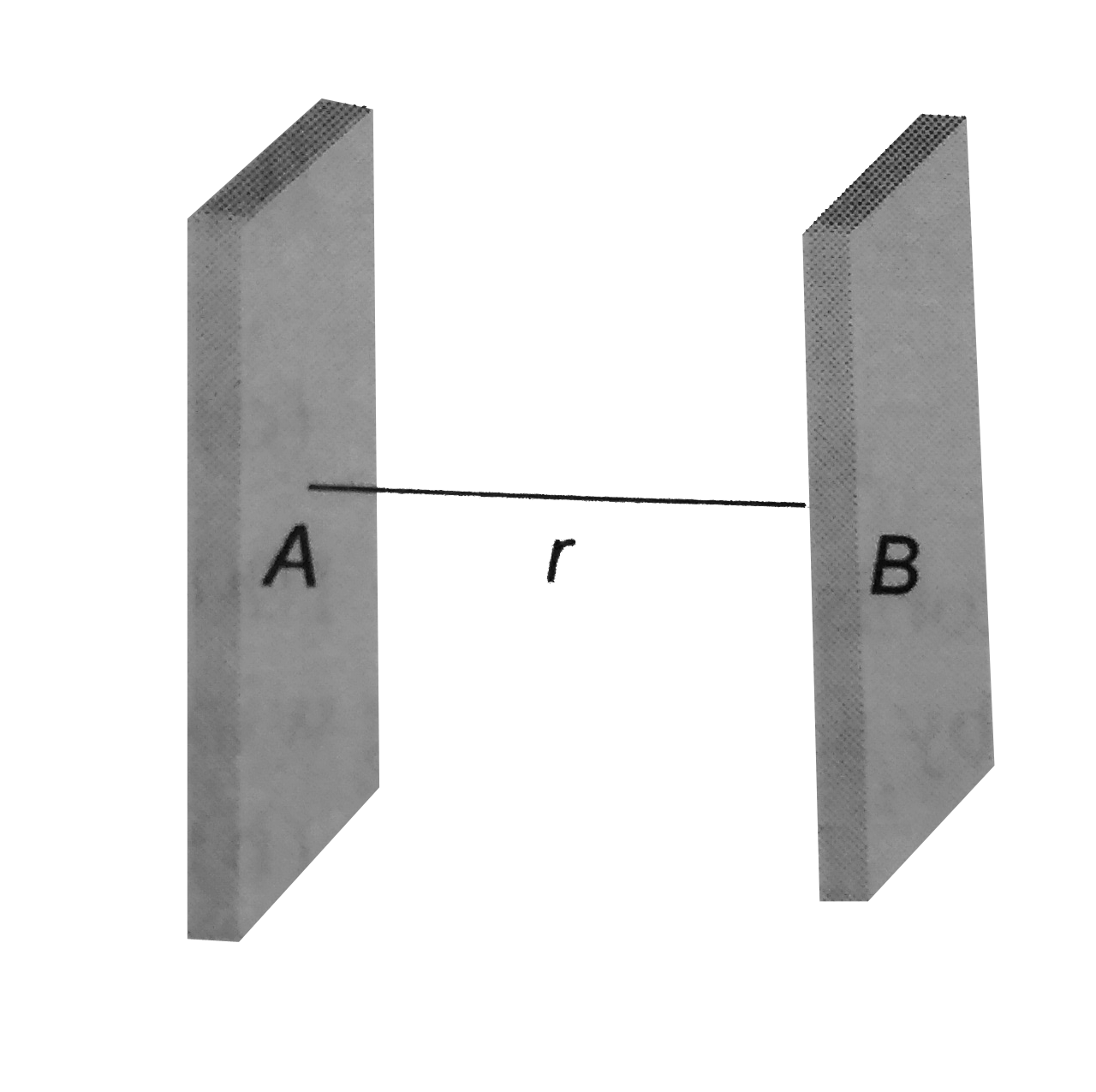There are two equipotential surafce as shown in figure. The distance between them is r. The charged of −q coulomb is taken from the surface A to B, the resultant work done will be

W=14πε0qr
W=14πε0qr2
W=−14πε0qr2
W= zero
The correct Answer is:D
The work done is given by =q(V2−V1)=0
Topper's Solved these Questions
- ELECTRIC POTENTIAL & CAPACITANCEBOOK - A2ZCHAPTER - ELECTRIC POTENTIAL & CAPACITANCEEXERCISE - Capacitor
32 Videos
- ELECTRIC POTENTIAL & CAPACITANCEBOOK - A2ZCHAPTER - ELECTRIC POTENTIAL & CAPACITANCEEXERCISE - Capacitor With Dielectric
32 Videos
- ELECTRIC POTENTIAL & CAPACITANCEBOOK - A2ZCHAPTER - ELECTRIC POTENTIAL & CAPACITANCEEXERCISE - Electric Potential Energy
22 Videos
- ELECTRIC CHARGE, FIELD & FLUXBOOK - A2ZCHAPTER - ELECTRIC CHARGE, FIELD & FLUXEXERCISE - Section D - Chapter End Test
29 Videos
- ELECTROMAGNETIC INDUCTIONBOOK - A2ZCHAPTER - ELECTROMAGNETIC INDUCTIONEXERCISE - Section D - Chapter End Test
30 Videos
Similar Questions

As shown in figure three paths through which a gas can be taken from the state A to the state B. Calculate the work done by the gas in each of the three paths.
View SolutionTwo charge +q and −q are placed at distance r. Match the following two columns when distance between them is charged to r'.

View Solution
Knowledge Check
There are two equipotential surafce as shown in figure. The distance between them is r. The charged of −q coulomb is taken from the surface A to B, the resultant work done will be
 A14πε0qr2BZeroC−14πε0qrD−14πε0.qr2
A14πε0qr2BZeroC−14πε0qrD−14πε0.qr2A few spherical equipotential surfaces are shown in the figure. The electric field at any point, at a distance x from the centre, is
 A6x2 perpendicular to the plane of paperB600x2 perpendicular to the plane of paperC6x2 radiallyD600x2 radially
A6x2 perpendicular to the plane of paperB600x2 perpendicular to the plane of paperC6x2 radiallyD600x2 radiallyIf an object of mass m is taken from the surface of earth (radius R) to a height 5R, then the work done is
A2mgRBmgRC56mgRD32mgR
On the basis of your understanding of the following paragraph and the related studied concepts.
An equipotential surface is a surface with a constant value of electric potential at all points on the surface. The component of electric field parallel to an equipotential surface is zero, as the potential does not change in this direction. Thus, the electric field is perpendicular to the equipotential surface at each point of the surface. Further, say the direction of electric field electrical potential gradually fall with distance.
If a charge of 2 nC is taken from equipotential surface number 2 to 3, what is the amount of work done ?
View SolutionA unit charge moves on an equipotential surface from a point A to point B, then
View SolutionWork done in moving a positive charge on an equipotential surafce is
View SolutionWork done in moving a charge q coulomb on the surface of given charged conductor of potential V is
View SolutionIf a particle moves on an equipotential surface of an external field, work done by the electric field on the charge is
View Solution